- Home
- Orhan Pamuk
The Innocence of Memories Page 3
The Innocence of Memories Read online
Page 3
AYLA: Because he came across Füsun’s ghosts when wandering slowly through the streets, staring into the distance, Kemal took to wandering slowly through the streets, always looking afar. He wanted to cry, but knowing he was guilty, he couldn’t allow himself, and instead he buried his head in the sand and felt damned.
INTERVIEW, ORHAN PAMUK: If like me you’ve lived in the same city for sixty-two years, you will find signs pointing to your memories in every piece of the city, in its monuments, buildings, views, and trees, in its night and day, its cats and dogs, in the people on its streets, in the pavements and the squares. It’s like what westerners call an ‘index’. But when those buildings and those streets start to change, when they start to look different, when the old timber homes get demolished, when those late Ottoman buildings made out of wood and stone are damaged by their new occupiers, when old cinemas close down and disappear, the index to our memories begins to fade – and that is a catastrophe for each of us in its own way.
AYLA: I read that among the crowds in Taksim Square one day, Kemal saw Füsun’s white shadow for almost two minutes before the illusion faded. I cannot imagine that there is a single inhabitant of this city who does not have at least one memory connected to Taksim Square and Gezi Park. In the 1930s, the old artillery barracks contained a small football stadium that hosted official matches. The famous club, Taksim Gazino, which was the centre of Istanbul’s nightlife in the forties and fifties, stood on the corner of Gezi Park. And in 1977, forty-two people were killed in an outburst of provoked violence and the chaos that followed. All manner of political parties, right-wing and left-wing, nationalists, conservatives, socialists, and social democrats, held rallies in Taksim. A square and a park that cradle the memories of millions. The only green space left in the centre of the city. Each time one of these signs is destroyed, you are faced with the distressing truth that part of your past will go with it. A new building blocks your favourite view of the Bosphorus, and there’s one memory gone. Another memory is erased when a shop closes for good. A different side of you is gone when a tree is cut down. Eventually, it all disappears.
Every time a building is demolished, every time the city’s roads and landscapes shift, you know that your memories too are being destroyed because no-one will be able to remember them any more. But then new people, new crowds, new stories, and new memories begin to flow into the city. And as you look towards the new skyscrapers and watch as buildings rise fast towards the sky, you notice how the city is changing with each new generation. It isn’t just the city itself transforming, and your memories with it, but also the people who live there, who move along its streets and across its squares. And when you walk down those deserted streets in the middle of the night, you realise that what the city and its people remember is also changing from one generation to the next. I remember the melancholy of those empty streets in the night, the sound of memories silently fading away into nothing. Those moments when everything in the world turns inward. Those hours in which objects and streets cease to remind us of anything other than what they are. When there isn’t a soul out on the streets, when the last pack of strays has retired for the night, and only the last of the street dogs is left to roam. That is when memories begin to fade away.
TAXI DRIVER: There are some streets I have trouble finding. They change the street names every few years anyway. When I first began driving a taxi, Istanbul wasn’t so big, but now it keeps getting bigger. The more it grows, the more places there are that I’ve never heard of. New places, new streets and boulevards are born.
AYLA: It didn’t take me long to accept that Istanbul was no longer the Istanbul I knew. When you spend twenty, maybe thirty years in a city, it starts to feel like a part of your own body. When we’re lying in bed at night, the city streets feel like extensions of our own limbs. As we drift off to sleep, the image of the city in our minds links up with all the things we remember. And the city streets become part of the dream we are about to dream. In that moment, our memories and the sleeping city, fiction and life, all blend into one another. Were all the things written in the novel true? How much of it really happened to Füsun, and how much did the writer make up? How much of it was memory, and how much of it was fiction?
KEMAL: We have now come to the confession scene.
‘Do you remember that evening in early spring, darling, when we went to Fuaye?’ I began with these harmless, careful words. ‘You saw that Jenny Colon bag in a shop window, and as we passed you said you liked it. We both stopped to look at it.’
My darling fiancée knew at once that this was about more than a handbag, that I was about to speak of something real and serious; as her eyes widened, I told her the story that readers will recall and visitors to the museum have known since viewing the very first object on exhibit.
I told Sibel the story in careful chronological order.
Having, of course, omitted the details of sexual bliss at the heart of my tale, I made it sound like a typical Turkish man’s silly indiscretion on the eve of his marriage.
‘You’re a disgusting person, and it’s only now I can see it,’ said Sibel. Picking up an old bag of my mother’s – rose-printed, and full of her loose change – Sibel hurled it at me. The loose change went flying across the floor like broken glass.
‘She’s a common shopgirl. She’s disgusting! Are you still seeing her?’
‘Of course I’m not.’
That morning, Sibel was strong and decisive in a way that shocks me even today. ‘This thing you thought was love – it was just a passing obsession,’ she said. ‘I’ll look after you. I’ll rescue you from this nonsense you got mixed up in.’
Sibel’s parents had by now returned to their house in Ankara for the winter, and so the yalı in Anadoluhisarı was empty.
I was going to move there with her at once, abandoning all the habits that had kept me in thrall to my obsession.
From mid-November onwards, whenever we awoke on a windless night – raw from misery, or thirst, because we’d had so much to drink – we began to hear a fisherman splashing around in his rowboat, just beyond our closed shutters, moving through the still waters of the Bosphorus.
AYLA: But Kemal failed to make things work with Sibel, and when he realised that he would never be able to forget Füsun, he left the yalı and took refuge in the Fatih Hotel, and thirty years later, I found it standing in the same spot. Orhan Pamuk had told me how during the 1960s and 1970s, this sort of third-rate hotel had become the kind of place where bourgeois men like Kemal would come to live with their broken hearts when love, politics, or poverty made them the subject of mockery and cost them their upper-class lifestyles. We thought that Kemal’s move to the hotel may have been his way of trying to overcome the difference in social class that separated him from Füsun.
INTERVIEW, EMRE AYVAZ: Love banishes Kemal from his own social class. You too have become estranged from your social class. Could you expand on this?
INTERVIEW, ORHAN PAMUK: Kemal is ostracised by the Nişantaşı bourgeoisie because of his pitiful love affair. They mock him for it. They consider it a little unseemly. I too became distanced from that same social class. I don’t particularly mind, though in my case it wasn’t my love for Füsun that caused me to be excluded, but my love of literature, and the political controversy in which I became embroiled. Between 2004 and 2010, I kept getting dragged into political debates. In those years, I feared for my life. I hid away and secretly came here to build the museum. The newspapers wrote that Orhan Pamuk had left Turkey and had gone to live in the United States – which suited me just fine. I would sneak out with my bodyguard and work on the museum … I turned into some kind of ghost.
It used to make me angry, back then, but it’s in the past now and I bear no grudges. I mean it. I focused on my museum – and I wrote a love story which had little to do with politics. That worked out well. I used the money from the Nobel for the museum. There was something satisfying in tiptoeing through the backstreets of the city an
d slipping into the museum like a mouse. I enjoyed that quiet mood. I don’t now sit around and brood over how I was treated.
KEMAL: I could not bring myself to call Sibel until the end of February. I was afraid that the dreaded talk might end in unpleasantness, anger, tears, and reproach, and hoping she might take the initiative and send back the ring with a fully justified excuse. But one day I could bear the tension no longer, so I picked up the phone and rang her; we agreed to meet for supper.
Sibel returned her engagement ring to me. Although news of her came to me from all directions, I would not see her again for thirty-one years.
AYLA: On Wednesday May 19th, 1976, at half past seven, Kemal set out for Füsun’s family house in Çukurcuma. It was as if he’d forgotten all the pain he had endured since last seeing Füsun at the Hilton Hotel 339 days earlier. He was going to ask her to marry him. The car stopped in front of an old building. His heart racing, Kemal knocked on the door. Almost at once, Aunt Nesibe answered. He was climbing the stairs, and with every step he was drawing closer to Füsun. His plan had been to ignore her parents and throw his arms around her, but he could tell from the look on her face as she approached him that she didn’t want him to embrace her. They shook hands. ‘Oh, what lovely roses,’ she said, without taking them from his hands. ‘Aren’t they lovely?’ she said, now addressing someone else in the room. Kemal came eye to eye with the person she had indicated. ‘Cousin Kemal, let me introduce you. This is my husband, Feridun,’ she said, trying to sound as if she had just recalled a detail of minor significance. ‘We married five months ago,’ said Füsun, raising her eyebrows as if waiting for the penny to drop.
KEMAL: After closing the door to the bathroom on the top floor, I decided that my life was no longer in my control, that my connection to Füsun had shaped it into something beyond my free will. Only by believing this could I be happy, could I indeed bear to live. On the little tray before the mirror bearing Füsun’s, Aunt Nesibe’s, and Uncle Tarık’s toothbrushes, as well as shaving soap, brush, and razor, I saw Füsun’s lipstick. I picked it up, sniffed it, and put it into my pocket.
AYLA: Kemal’s first visit to the Çukurcuma house was on Saturday October 23rd, 1976. His last visit was on Sunday August 26th, 1984. He went for supper 1,593 times between those dates, an average of four times a week. Some evenings, I would see him stepping into the building to visit Füsun. He would usually bring a gift: a new hairclip for Füsun, an ornamental bowl, another bottle of cologne. Another bottle of cologne.
INTERVIEW, ORHAN PAMUK: Füsun’s husband is an aspiring film director, and Füsun’s dream is to star in Turkish films. Füsun and her husband both hope that Kemal, this distant relative who comes knocking at their door in the evenings, always bearing gifts, might help Füsun realise her ambition to become a film star.
Lots of films were shot in Cihangir and Çukurcuma when I was a boy, and they’ve started again now, after a thirty-year interval. Back in the 1960s and 1970s, whenever there was a serious family argument, whenever my parents had a fight, they would dispatch us to Cihangir. Movies were shot there because the neighbourhood was so close to the major Turkish film studios. We would stumble upon kissing scenes all the time, and there was always some security guy from the set telling us kids to ‘stay away’, and berating us for getting too close.
These were cheap films, and quickly made, like those black-and-white films Americans call B-movies. The actors wouldn’t even bother to learn the dialogue, so a production assistant would have to call out their lines – ‘I love you so much!’ – shouting to make themselves heard over the noise of the generator powering the set. The actors would hurriedly repeat whatever words they’d managed to catch. The whole process had us completely awestruck. The Museum of Innocence bears the traces of my nostalgia for that time, and my affection for Turkish film stars of that period.
AYLA: We’re going into a different world, Füsun told me at the cinema one day. We could hardly wait for the curtains to part and reveal the screen. Later, I thought how those red curtains were similar to the curtains on the boxes in the museum. Füsun loved Turkish films, and Türkan Şoray’s eyes.
TÜRKAN ŞORAY: He follows the woman down this road and past that mosque. We shot some scenes there. We shot over here, too. We walked over there, and behind those trees. I’ve been doing movies for almost fifty years. Every day, every movie I ever made has a scene shot in Istanbul. So in this city I find myself remembering, ‘This is where we shot that film.’ I have a memory connected to every street and every square.
AYLA: I read that from mid-June to the beginning of October 1976, Kemal, Füsun, and her husband Feridun went to see more than fifty films at the outdoor summer cinemas. These have all gone now, but back then, the Turkish melodramas that they showed allowed us, as a community, to watch the story of our own heartbreaks unfolding on the silver screen. I wondered if it is possible that by looking at objects we might see our memories as if they were a film. The Museum of Innocence seems to have been made by those who think that this is possible, and that we carry in our own hearts the very same hope that we see emanating from the cinema crowd’s gaze. Perhaps, as our soul focuses on objects, we can feel in our broken hearts that the whole world is one, and we can come to accept our sufferings.
The city was almost like a continuation of our gaze. If you were to walk out of the museum at night, you’d be forgiven for thinking the urban landscape was part of the exhibit. That shop window could easily replace one of the displays in the museum. The light over here and the darkness over there might be trickling out of Füsun’s home and into the city. When Kemal left the building and went home late in the evenings, he may well have thought that the city itself was like a museum. The entire city was, perhaps, like something remembered.
‘A city,’ Orhan Pamuk once told me, ‘will be a museum for our memories, if we live in it long enough.’ I wondered what the objects in the museum might look like at night, when it’s dark and the doors have closed for the day. If no-one touched them or moved them around, if no-one ever even looked at them, they could still exist there until the end of time.
There is a story to tell every time people and objects meet. Stories exist within time. That time I bought this white handbag. That time I picked up this saltshaker. That time I dropped this earring. That time I saw this newspaper. That time I kicked this red ball. That time I wound that clock. That time I looked at this view. There is always a story to tell.
I was looking out of the window when I saw this crow. I was crying while I washed my hands in this sink. A boza seller walked down the street while I was listening to this radio. I thought of her while I looked at this ship. I was in love with her when I picked up this cigarette butt. Then there was another cigarette. Followed by another cigarette butt, and another. And all those cigarette butts are now a sort of calendar for the museum, a timeline of Kemal and Füsun’s love story.
KEMAL: During my eight years of going to the Keskins’ for supper, I was able to squirrel away 4,213 of Füsun’s cigarette butts. Each one of these had touched her rosy lips and entered her mouth, some even touching her tongue and becoming moist, as I would discover when I put my finger on the filter soon after she had stubbed the cigarette out; the stubs, reddened by her lovely lipstick, bore the unique impress of her lips at some moment whose memory was laden with anguish or bliss, making these stubs artefacts of singular intimacy.
VARIOUS VOICES: October 26th, 1976: ‘Füsun, be nice to our guest.’ November 15th, 1977: I don’t know what they say about me behind my back. November 17th: I feel like I’ve been waiting forever. Be patient, Kemal. Give it time. January 30th, 1978: Ships whistle. December 1st: I stole a saltshaker off your table, like a thief. 1977: I took the rusty ladle. I took the Ankara soda bottle home.
AYLA: I wasn’t aware that Kemal was holding on to everything Füsun ever touched. I only found out when I read the novel and saw the museum. Collecting objects means collecting stories, too. When you see all these objects t
ogether in one place, you end up feeling that their stories must also have happened at the same time: for in the museum, every object and every moment in time merges into one. As I looked at those objects, it was as if each display and every room was revealing the slow passage of Time itself.
INTERVIEW, ORHAN PAMUK: During my first twenty years as a writer, I used to write until four in the morning. Walking back home from my studio at night, I would always encounter packs of stray dogs. Until recently, the nightscape of Istanbul, its night hours and night-time streets, were ruled by street dogs. The French poet Nerval, the most intelligent and observant of all the modern travellers who visited Istanbul, concluded that if Istanbul’s residents were so respectful towards these dogs, it was because they acted as guardians at night, and because they chewed up the city’s rubbish. When I was a boy, I witnessed what was, in effect, a municipal massacre of these street dogs, who were killed by the authorities in a pre-emptive measure against rabies. The story of Istanbul’s westernisation is intertwined with the genocide of its dogs.
KEMAL: She took the dog from my hand and placed it on the television set. Sometimes the dogs set there brought us peace by their mere presence, much as the clock ticking on the wall did. Some looked threatening, others ugly and utterly charmless, but even these dogs made us feel as if we were sitting in a place guarded by dogs, and perhaps to feel thus protected was what brought us peace. As the neighbourhood echoed with the militants’ gunfire and the outside world seemed more surreal with every passing day, the black-eared dog was the most charming of the scores of dogs that came to rest on the Keskins’ television during those eight years.

 Snow
Snow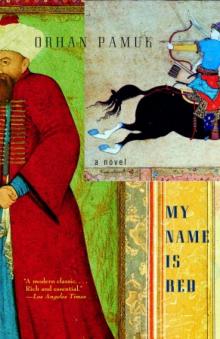 My Name is Red
My Name is Red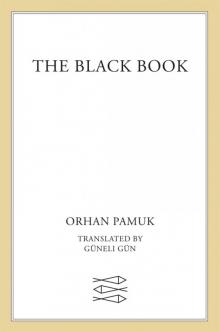 The Black Book
The Black Book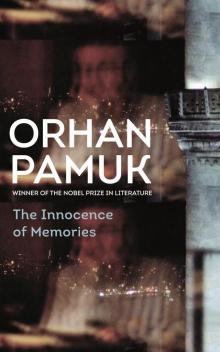 The Innocence of Memories
The Innocence of Memories The White Castle
The White Castle Other Colors
Other Colors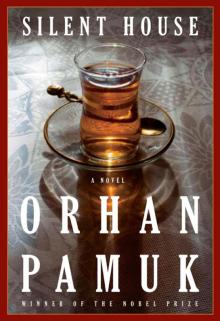 Silent House
Silent House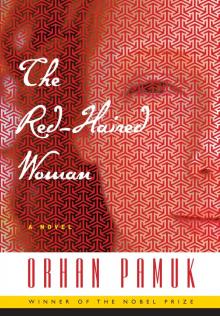 The Red-Haired Woman
The Red-Haired Woman The Museum of Innocence
The Museum of Innocence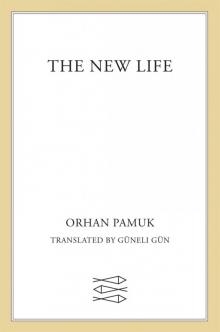 The New Life
The New Life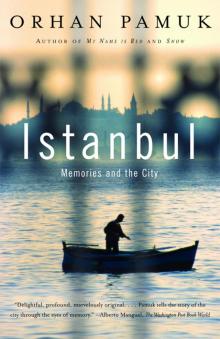 Istanbul
Istanbul